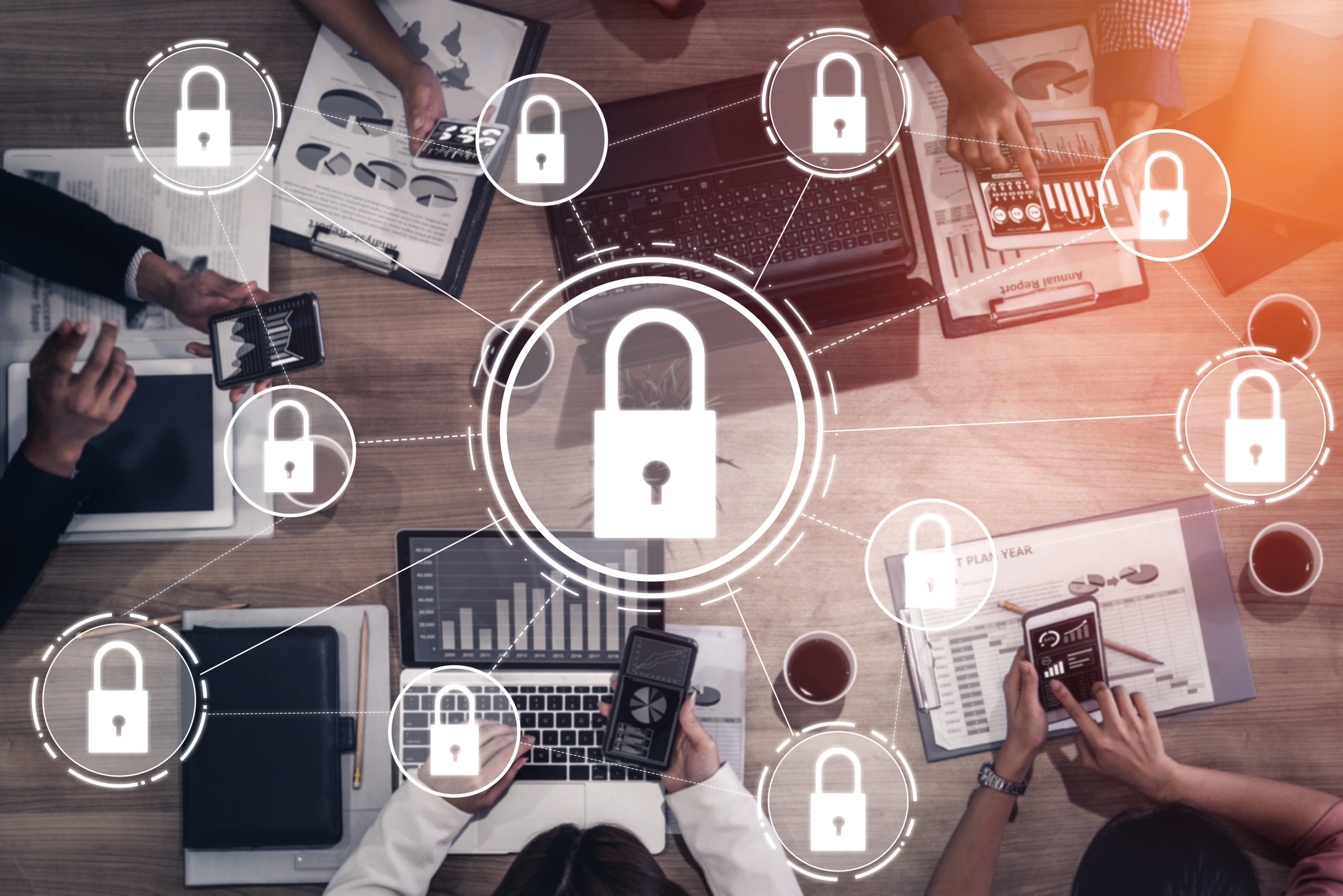What Should Your Company’s Layers of IT Security Look Like?

Any good defensive strategy includes multiple layers. For example, with physical building security, organizations will have gates for parking lot access, outside security cameras, front doors that use keycards for entry, and so on.
All layers work togetherto strengthen the overall security of the building and help keep unauthorized parties out.
The same is true for any good IT security strategy. It includes multiple layers that are designed to protect different areas of your technology infrastructure and work in concert to keep hackers out, keep viruses and malware away, and your data safe.
If you’re just relying on something like an anti-malware program without any additional layers, then it’s like locking the front door of your home but leaving the back door wide open.
There are multiple cyber threats out there and many are designed to attack a different part of your technology infrastructure.
- A botnet might be unleashed against your network, that without a firewall is left vulnerable.
- Your users could be the target of a phishing attack that’s using your email inboxes as its main mode of entry.
- A ransomware attacker could be counting on your not having a backup when they scramble your data and demand a ransom in the thousands of dollars.
Cybersecurity breaches have increased 67% in the last five years and hackers continue to come up with new and inventive ways to get past your defenses.
Companies that use best practices when it comes to layered IT security are at a much lower risk of becoming a hacker’s next victim.
So, what should your security layers look like?
Business Checklist for Building Strong Layers of Cybersecurity
The layers in your cybersecurity plan are designed to backstop each other and throw up another defense should a hacker get past one.
Say you have trained your users on good password practices and how to create strong passwords (layer 1). But a hacker manages to hack one of their passwords anyway and tries to login.
The hacker runs into the two-factor authentication that requests a PIN (layer 2) and can’t gain entry. Your network firewall alerts you of traffic coming from an unknown IP (layer 3) and you know that someone’s tried to hack your network and can strengthen your defenses in response.
That’s how layers work together to safeguard your network and data.
Following is a checklist that will give you some of the most important layers to include in your cybersecurity strategy to make sure you’re covered for all the different types of threats out there.
Firewall
Starting at the outer edge of your security defenses is the firewall. Firewalls monitor all incoming and outgoing traffic and are the first line of defense between your internal network and the internet.
They’ll alert you of any unusual traffic patterns, block known bad actors, and can prevent attacks that are targeting your network.
DNS Filtering Service
DNS filtering is also sometimes referred to as web protection and it protects your users when they access websites. Phishing scams often use URL’s to malicious sites that do “drive-by downloads” of malware onto a computer.
50% of recipients open e-mails and click on malicious phishing links within the first hour of them being sent.
A DNS filtering service stops users from accidentally visiting malicious sites by blocking them and alerting the user of the danger. They can also be used to block non-work appropriate websites.
Antivirus/Anti-Malware Software
Your antivirus/anti-malware software protects your devices against any threats that have been introduced to the device they’re installed on. They’ll often scan email attachments to ensure they’re clean and quarantine any malware or viruses found to keep them from spreading and infecting other devices on the network.
Spam/Anti-Phishing Applications
Phishing email is the number one method used to deliver malware and it continues to be responsible for 90% of data breaches.
An application designed to keep spam and phishing emails out of user inboxes helps reduce the chance of an accidental click on a fake email and also increases productivity by reducing the amount of junk email that your users have to go through on a daily basis.
Two-Factor Authentication
One way to significantly boost your password security is to enable two-factor authentication (2FA) on all your logins for any cloud software you use.
Studies by Google have shown that using 2FA can significantly decrease data breaches due to hacked passwords and it protects your users and data even if their logins may have been breached.
Backup & Recovery
Ensuring that all your data is being backed up regularly so it can be recovered in the case of a data loss incident is an important part of your overall data security.
Ransomware is one of the most prevalent types of cyberattacks and it’s used to target both small and large businesses alike. The organizations that aren’t caught having to pay a ransom are the ones with an easily recoverable back up of all their data.
Backups are vital to business continuity and ensuring no matter what (natural disaster, data breach, etc.) that your business data is intact.
Security Awareness Training
Your employees are often on the front line of attacks, such as phishing emails and social phishing (which is becoming more popular).
Providing regular security training gives them the tools they need to spot phishing attacks and avoid them. It also is important to help your employees understand how to handle any sensitive customer data and your own company internal files to ensure proper security.
How Well Layered Is Your Cybersecurity Strategy?
Does your company have all the layers you need for strong hacker defenses, or are you missing some? C Solutions can review your current data security practices and make any needed suggestions to ensure you’re not at risk.
Schedule a free security consultation today! Call 407-536-8381 or reach us online.
